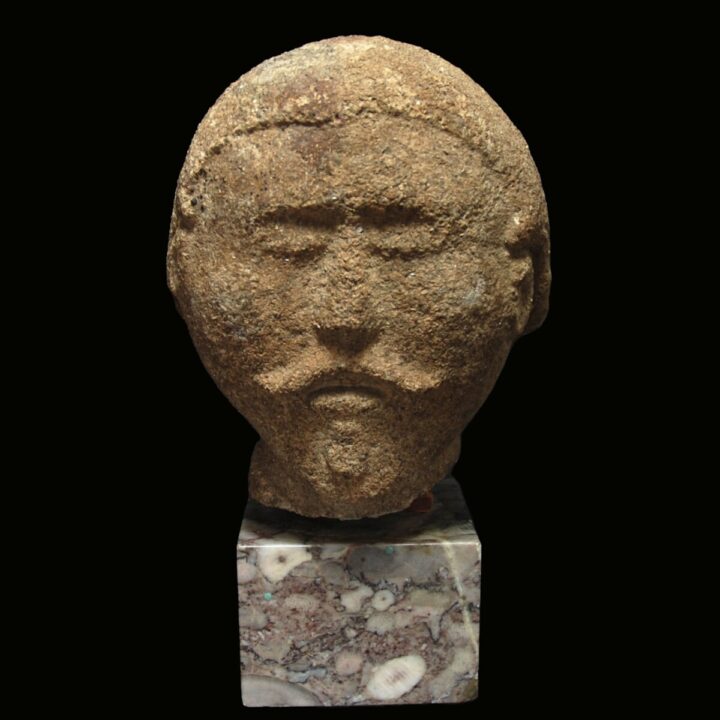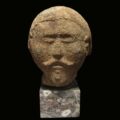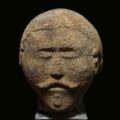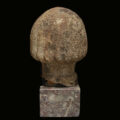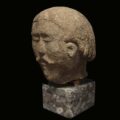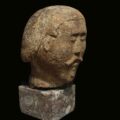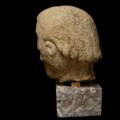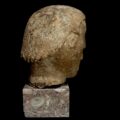Celtic Granite Head of a Man
Culture: Celtic
Period: 3rd-2nd century B.C.
Material: Granite
Dimensions: 19.8 cm high
Price: Sold
Ref: 5244
Provenance: From an old Central European collection due to the mounting from the middle of the 20th century. Last in the French art market.
Condition: Unrestored
Description: Important Celtic granite head depicting a man of high ranking, possibly a Druid. The face tapering downwards with narrow, almond-shaped eyes, which appear to be closed and sit deep under arched brows. The man wears a curved mustache crowning a slightly opened mouth, as well as a round chin beard. The thick hair frames the high forehead, forms a forward-twisted curl in front of the small ears and cascades in the back in thick strands to the nape. The artistically extraordinarily finely worked out head reminds stylistically of the famous head from the Czech village Mšecke Zehrovice, which is today in the Prague National Museum. The head cult was a widespread practice with the Celts, where stone heads, such as the present one, were made as substitutes for decapitated human heads, which were lost during the battle. The Celts held a deep reverence for the head, as they regarded it as the vassal of the soul that had strong protective power against evil spirits, as well as a symbol of power that served as a source of supernatural wisdom. The Celtic emphasis on the head was later carried over to the Christian belief in the head as the locus of the soul, and hence their preservation of the heads of saints as sacred relics. On an old marble base.



